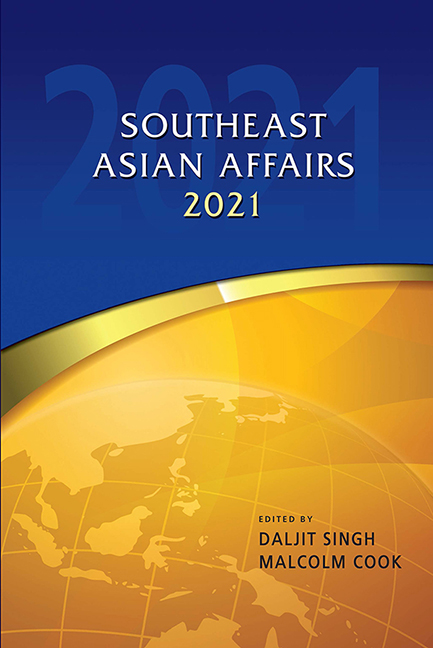Economic Outlook for Southeast Asia: From Containment to Recovery
Published online by Cambridge University Press: 09 October 2021
Summary
The coronavirus (COVID-19) pandemic is a global shock that has resulted in simultaneous disruptions to both supply and demand in an interconnected world economy. On the supply side, infections reduce labour supply and productivity, while lockdowns, business closures and social distancing cause supply disruptions. On the demand side, layoffs, losses in income and poorer economic prospects reduce household consumption and investment by firms. The extreme uncertainty about the path, duration and impact of the pandemic could pose a vicious cycle of reducing business and consumer confidence, which could further increase job losses and deter investment.
This chapter aims to gauge the prospects of economic recovery in Southeast Asia in 2020–21. The prospects are reviewed against three indicators: domestic containment of the COVID-19 pandemic, the impact of COVID-19 on economic growth, and the prospects of economic recovery in the rest of the world.
This chapter consists of four sections. The first section provides a comparative overview of the containment of the COVID-19 pandemic in Southeast Asia and the rest of the world. The second section assesses the impact of COVID-19 on economic growth using the projected real GDP growth from the International Monetary Fund's “World Economic Outlook” and the realized growth figures from CEIC. It also reviews the size and composition of economic stimulus packages and the use of monetary policy instruments to mitigate the impact of COVID-19 on households and firms. The third section discusses the prospects for economic recovery, and the fourth section concludes the study.
Containing the COVID-19 pandemic
Sustained revival of economic activities in a country requires the successful containment of the COVID-19 pandemic. But major economies and some Southeast Asian countries have not yet been able to contain the spread of COVID-19. The United States, India, the United Kingdom, France, Germany and Japan are still facing rising numbers of daily COVID-19 infections and deaths (Figure 1a). As of 27 November, these countries had recorded 27 million infections and 524,795 deaths, which accounted for 45 per cent of global infections and 37 per cent of global deaths, respectively.
The pandemic has so far been contained in many parts of Southeast Asia, but not in Indonesia or the Philippines, and it still threatens other countries, most recently Myanmar and Malaysia (Figure 1b). The number of daily infections in the Philippines has declined from about 4,000 cases in August to 1,700 cases in November.
- Type
- Chapter
- Information
- Southeast Asian Affairs 2021 , pp. 22 - 38Publisher: ISEAS–Yusof Ishak InstitutePrint publication year: 2021



